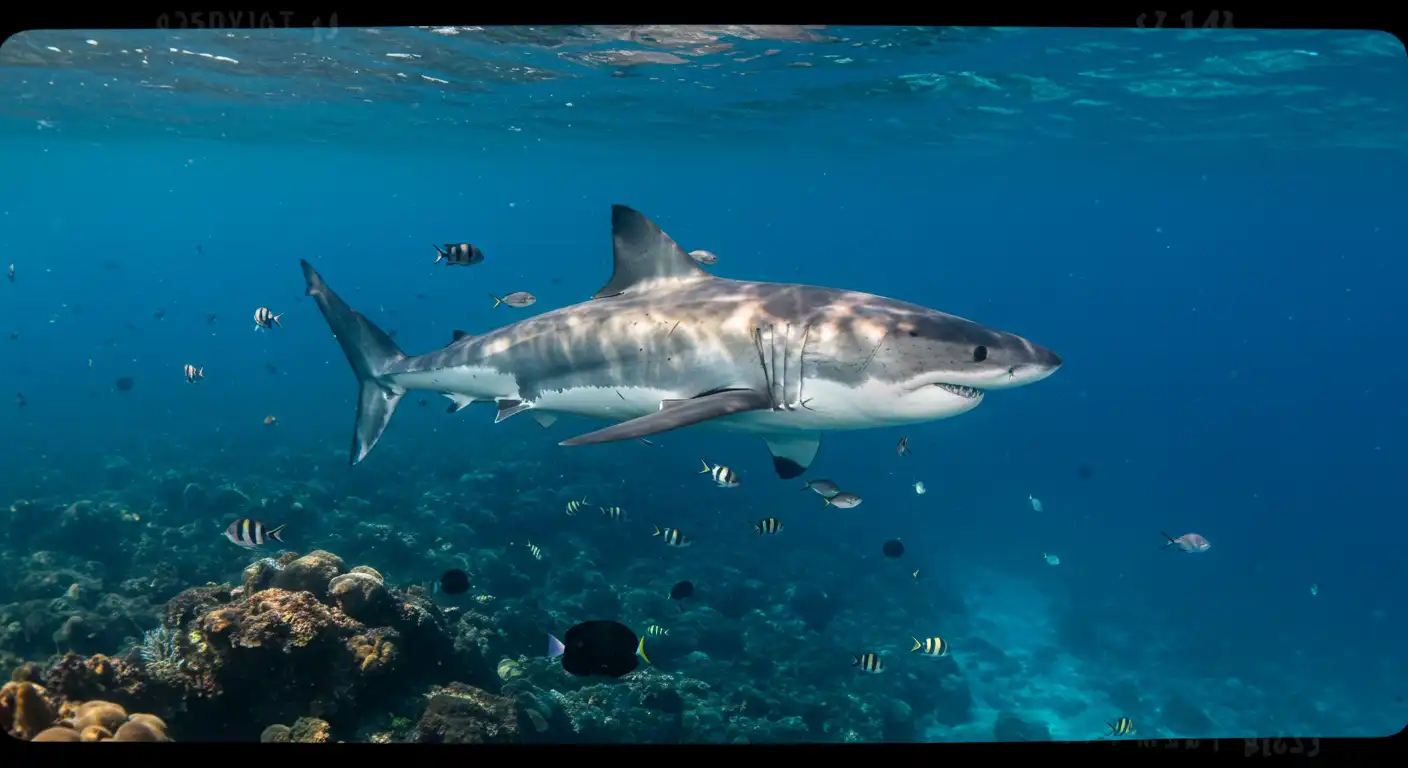Ever wondered how big great white sharks can actually get? These ocean giants have sparked awe and fear for centuries, and for good reason. With those razor-sharp teeth, torpedo-shaped bodies, and legendary status in films and documentaries, great white sharks are the ultimate sea predators. But just how massive can they grow? Let’s dive deep—pun intended—into the world of the great white and unravel the facts, myths, and mind-blowing truths.
What Exactly Is a Great White Shark?
Great white sharks (scientific name: Carcharodon carcharias) are massive predatory fish found in coastal surface waters of all major oceans. They’re part of the mackerel shark family and are known for their size, speed, and power.
Average Size of a Great White Shark
The average adult great white shark is no small fry. Typically, males measure around 11 to 13 feet long, while females—who are generally larger—range from 15 to 16 feet. Their weight? Anywhere between 1,500 to 2,400 pounds.
But that’s just average. Things get way more interesting when we start talking about the outliers.
How Big Can They Actually Get?
So, what’s the max size these beasts can reach? Reports and scientific data suggest that the largest confirmed great white shark measured was around 20 feet long and weighed over 5,000 pounds. However, unverified sightings and local legends sometimes exaggerate that number up to 25 feet or more. While it’s thrilling to imagine a shark the length of a school bus, science hasn’t confirmed anything bigger than the 20-foot mark… yet.
Meet “Deep Blue” – The Largest Ever Recorded
You may have heard about Deep Blue, the largest great white shark ever caught on camera. Discovered off the coast of Guadalupe Island, Mexico, Deep Blue is believed to be around 20 feet long and over 50 years old. This massive female gained worldwide attention in 2014 and again in 2015 when she was filmed swimming peacefully near divers.
Unlike what you’d expect from a predator of her size, Deep Blue was calm, majestic, and not the aggressive monster Hollywood often portrays. Talk about beauty and the beast in one sleek package!
Why Do Female Great Whites Grow Bigger Than Males?
In the shark world, size matters—especially for females. Larger bodies allow them to carry more offspring. Great whites are ovoviviparous, meaning their babies hatch from eggs inside the mother and are born live. A bigger body offers more room for pups and provides better protection against threats, making it a natural evolutionary advantage.
How Fast Do Great Whites Grow?
Great whites don’t hit their full size overnight. In fact, they grow slowly over decades, with some not reaching sexual maturity until they’re around 15 years old. Females take even longer—sometimes up to 33 years.
Growth is influenced by a variety of factors: food availability, water temperature, and genetics. That’s why two sharks of the same age might be very different in size.
How Long Do Great White Sharks Live?
Ready for a surprise? Great white sharks can live up to 70 years or more, according to a 2014 study published in PLoS ONE. That’s longer than previously thought. Their long lifespan also contributes to their ability to grow to such massive sizes, but it comes at a cost—they reproduce very slowly, which makes their populations vulnerable.
What Do Great Whites Eat to Get So Big?
Let’s just say they don’t snack on salad. Young great whites typically feed on fish and rays, but as they grow larger, so does their appetite. Adult great whites prey on sea lions, seals, dolphins, and even other sharks. Their bite delivers over 4,000 PSI (pounds per square inch)—strong enough to crush bone.
A shark this size needs a diet packed with fat and protein to maintain energy, and marine mammals fit the bill perfectly.
Do Great Whites Keep Growing Forever?
Sort of. Great white sharks are considered indeterminate growers, which means they continue to grow slowly throughout their lives. However, their growth rate significantly slows down as they age. So while they don’t grow infinitely, they never completely stop adding inches either.
What Role Does Genetics Play in Their Size?
Genetics plays a huge role in determining how large a great white can get. Just like in humans, some sharks are simply born with a genetic edge—faster metabolism, better hunting instincts, stronger immune systems—all of which can contribute to size and longevity.
Where Are the Largest Great Whites Found?
You’ll find some of the biggest great whites off the coasts of South Africa, Australia, California, and Mexico (especially Guadalupe Island). These regions are rich in marine mammals, their favorite food, and offer prime real estate for hunting.
Fun fact? Colder waters are often associated with larger great whites. Scientists believe this might be because colder waters have more energy-rich prey and can support bigger-bodied predators.
How Does Their Size Affect Their Behavior?
It’s easy to assume that the bigger the shark, the more dangerous it is. But interestingly, larger great whites tend to be more cautious and calculated. They often take fewer risks and use ambush techniques instead of outright speed or aggression. It’s a bit like comparing a strategic general to an impulsive soldier.
Are Bigger Sharks More Dangerous to Humans?
Statistically speaking, shark attacks on humans are extremely rare. And when they do occur, they’re often cases of mistaken identity. Surfers and swimmers might look like seals from below. While larger sharks can certainly inflict more damage, they’re not necessarily more likely to attack.
In fact, most large great whites avoid humans altogether. They’re curious but not as aggressive as Hollywood blockbusters would have you believe.
Can Great Whites Be Kept in Aquariums?
Here’s a cool twist—no aquarium has successfully kept a great white shark for more than a few months. Their size, migratory habits, and need for open ocean space make captivity nearly impossible. The Monterey Bay Aquarium famously attempted it multiple times but ended up releasing the sharks due to health and behavioral concerns.
Their need for vast, open waters shows just how big—physically and metaphorically—these animals really are.
Myths and Misconceptions About Their Size
Let’s clear the water of some myths:
- No, great white sharks don’t grow to 30 or 40 feet.
- No, the Megalodon (an extinct giant shark) is not hiding in the deep.
- No, size doesn’t always equal danger.
But the fascination? That’s 100% real. And while we love a good sea monster tale, the truth is often just as thrilling.
Why Size Matters for Conservation
Understanding how big great whites can get isn’t just fun trivia—it’s critical for conservation. Larger sharks take longer to mature and reproduce, which makes them more vulnerable to overfishing and environmental changes. Protecting these apex predators means protecting the health of the entire marine ecosystem.
Conclusion
So, how big can great white sharks get? The answer: massive, but with natural limits. While 20 feet and 5,000 pounds is currently the upper bound, nature always has the potential to surprise us. From “Deep Blue” to the cold coasts of South Africa, these giants of the ocean continue to capture our imaginations—and remind us just how little we truly know about the deep blue sea.
Whether you’re a shark fanatic or a casual ocean observer, one thing’s for sure: great white sharks are big, bold, and breathtaking. And the more we learn about them, the more reasons we have to protect them.





